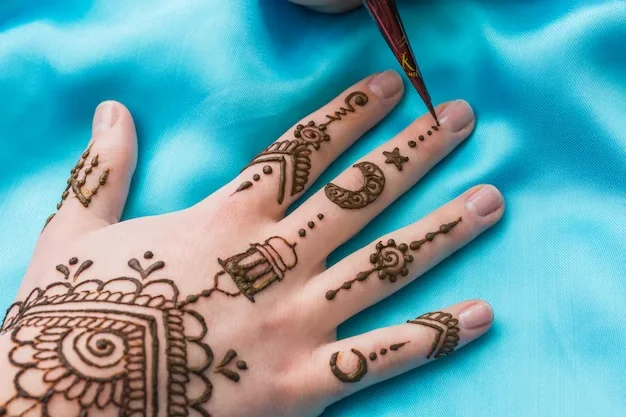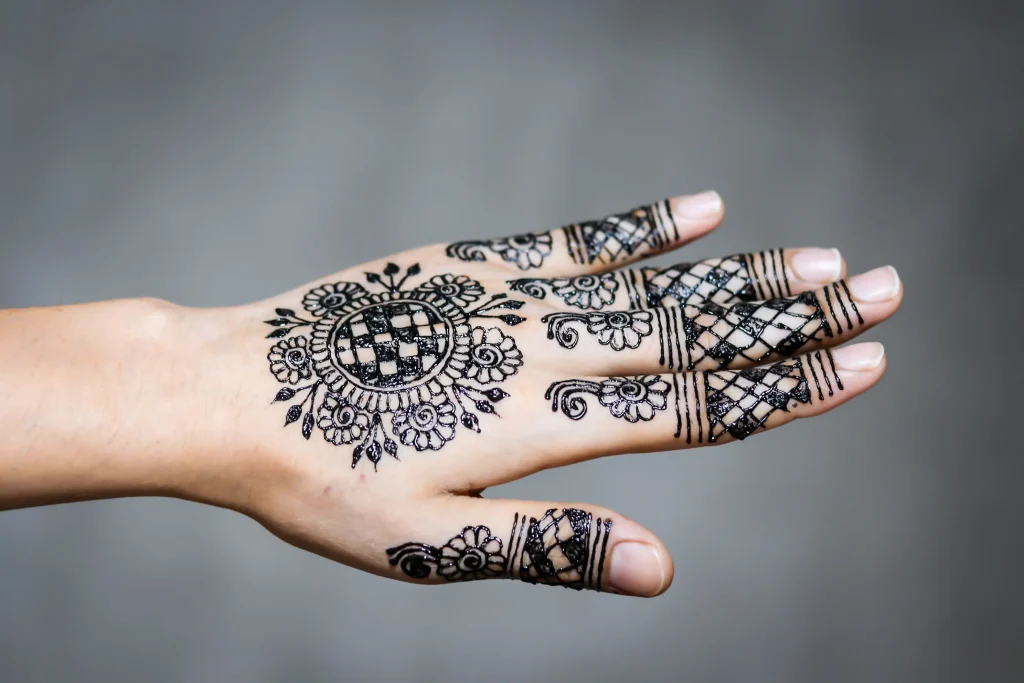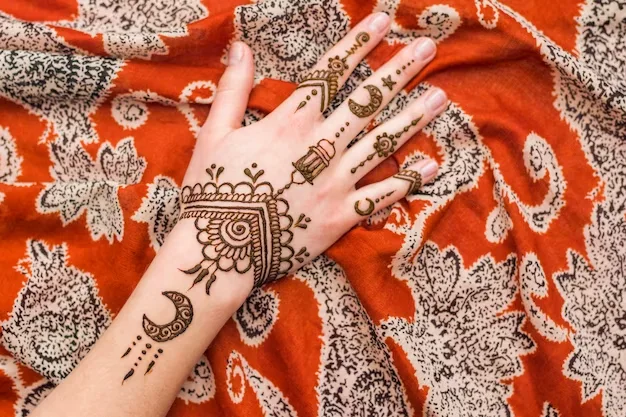Mehndi, the intricate art of adorning the body with henna paste, transcends mere decoration. It’s a cultural tapestry woven with history, tradition, and symbolism, leaving behind mesmerizing designs that tell stories and evoke emotions. From the vibrant hues of festivals to the delicate patterns of weddings, mehndi designs hold a unique place in the hearts of countless communities worldwide.
A Glimpse into History: The Roots of Mehndi
The origins of Mehndi remain shrouded in the mists of time, with evidence suggesting its practice stretching back thousands of years. Ancient civilizations in Egypt, India, and the Middle East used henna for various purposes, including dyeing textiles, medicinal treatments, and body art.
The word “mehndi” is believed to have derived from the Sanskrit word “mendhika,” referring to the henna plant. Over centuries, the art form evolved and diversified, influenced by regional customs and artistic expressions. Today, we see a rich tapestry of mehndi styles, each with distinct character and significance.
Exploring the Diverse Canvas: A Symphony of Styles
The world of mehndi designs is as vast and varied as the cultures that practice it. Here’s a peek into some of the most popular styles:
- Arabic Mehndi: Characterized by bold, geometric patterns and flowing lines, Arabic Mehndi often features floral motifs and paisleys. This style is popular in the Middle East and North Africa.

- Indian Mehndi: Known for its intricate details and elaborate patterns, it often incorporates paisley motifs, mandalas, and floral designs. This style is widely used in weddings and festivals across India and South Asia.
- Moroccan Mehndi: Moroccan styles feature bold geometric shapes and intricate linework like Arabic Mehndi. However, Moroccan Mehndi often incorporates Berber symbols and motifs, reflecting the unique cultural heritage of the region.
- Pakistani Mehndi: Combining elements of Arabic and Indian styles, Pakistani Mehndi often features floral motifs, paisleys, and geometric shapes. This style is known for its balance of intricate details and bold patterns.

- Modern Mehndi: This contemporary take on the traditional art form incorporates minimalist designs, geometric patterns, and even symbolic elements. Stylish Mehndi is often seen adorning hands and feet for casual occasions or as temporary body art.
Beyond Aesthetics: The Symbolism of Mehndi Designs
Mehndi designs are not merely decorative; they often hold deep cultural and symbolic meanings.
- Celebration and Festivities: In many cultures, Mehndi is an integral part of festive celebrations like Eid, Diwali, and Karwa Chauth. The intricate designs symbolize joy, blessings, and good fortune.
- Love and Marriage: In weddings, Mehndi holds immense significance. The elaborate designs on the bride’s hands and feet are believed to bring blessings to the couple and ward off evil.
- Spiritual Connection: Mehndi designs are associated with spiritual practices and beliefs in some cultures. The intricate patterns are seen as a form of meditation and a connection to the divine.
The Art of Application: A Delicate Dance of Creativity and Technique
Creating beautiful mehndi designs requires artistic talent and a deep understanding of the technique. The henna paste, prepared from the leaves of the henna plant, is applied using delicate cones or needles. The artist meticulously creates intricate patterns guided by tradition, personal flair, and the client’s preferences.
Mehndi in the Modern World: Embracing Tradition, Evolving with Time
The art of Mehndi continues to evolve in the modern world. While traditional styles remain cherished, contemporary artists push boundaries with innovative designs and fusion styles. Mehndi is no longer confined to specific occasions or cultures; it’s embraced as a form of self-expression and cultural appreciation by people worldwide.
Conclusion
Mehndi designs are more than just intricate patterns on the skin; they are a window into diverse cultures, traditions, and beliefs. From the vibrant hues of festivals to the delicate details of weddings, Mehndi continues to captivate hearts and imaginations across the globe. As this timeless art form continues to evolve, one thing remains sure: the allure of Mehndi’s designs will continue to enthrall for generations.





